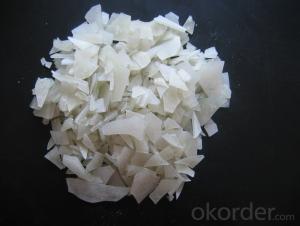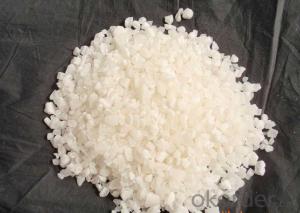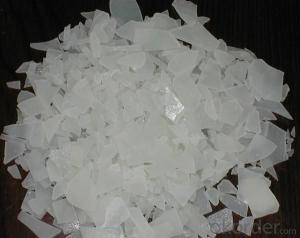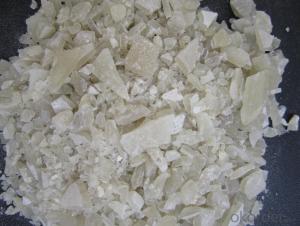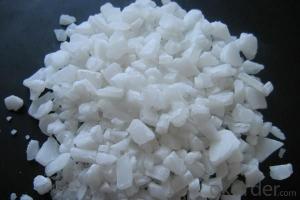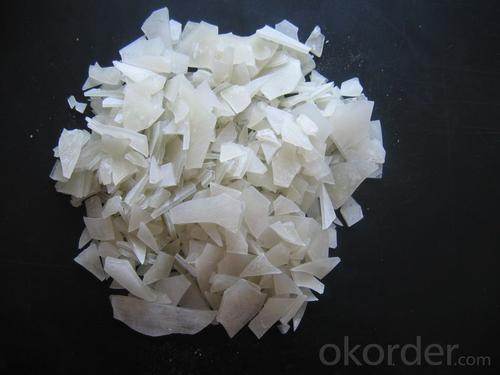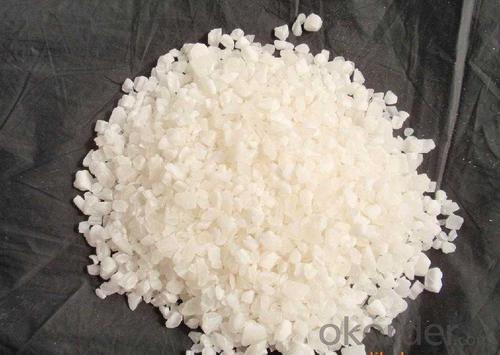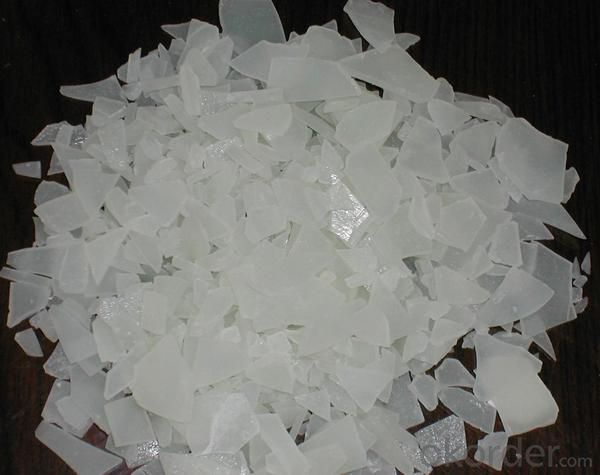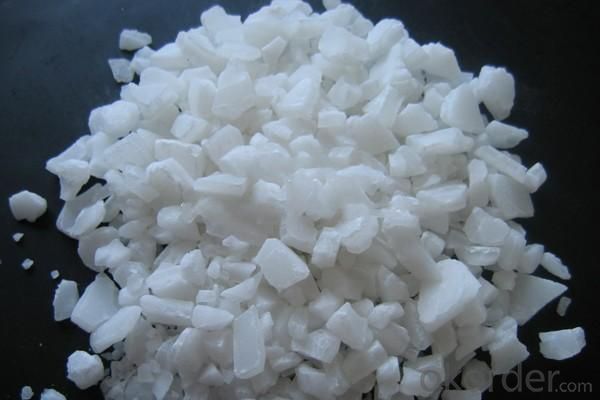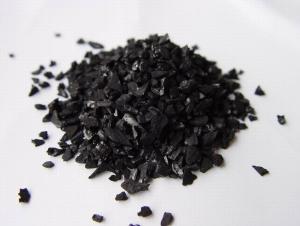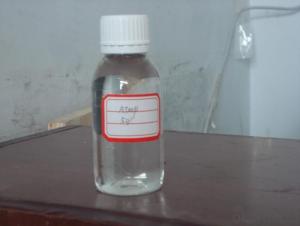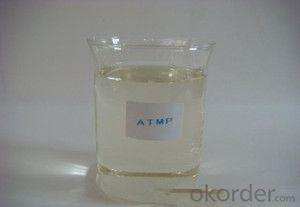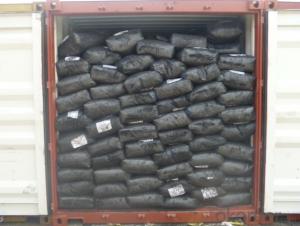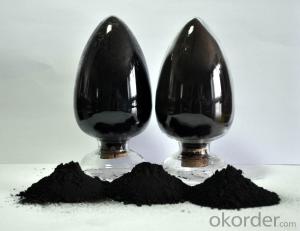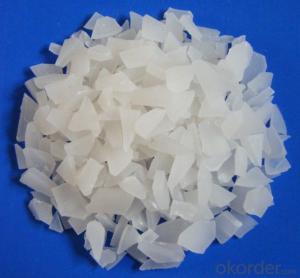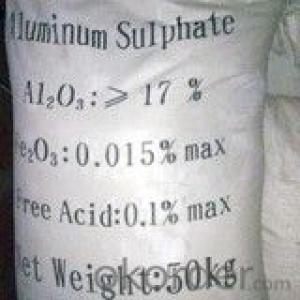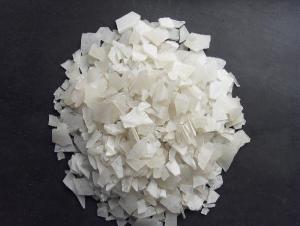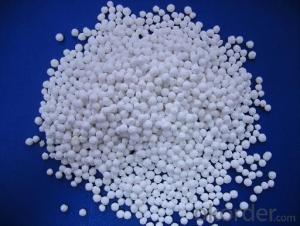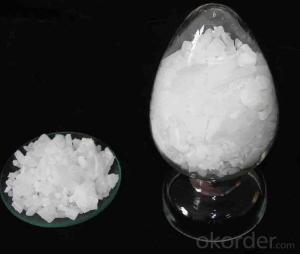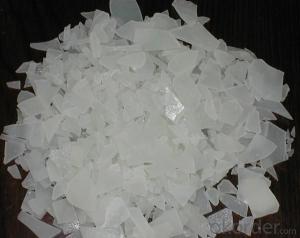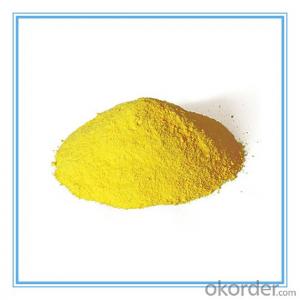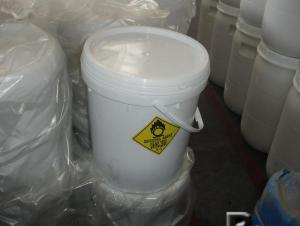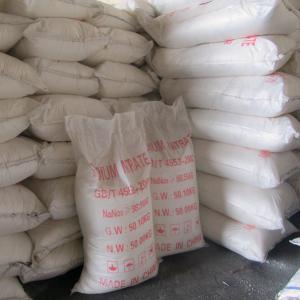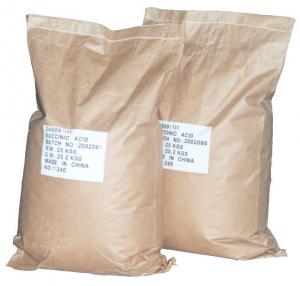Aluminum Sulphate Flocculant Water treatment
- Loading Port:
- Qingdao
- Payment Terms:
- TT OR LC
- Min Order Qty:
- 25 m.t.
- Supply Capability:
- 12000 m.t./month
OKorder Service Pledge
OKorder Financial Service
You Might Also Like
1. Chemical and Physical Properties:
Product name: Aluminium Sulphate or Aluminum Sulfate
Shape: Flakes or Granular or Powder.
EINECS NO.:233-135-0
CAS No.: 10043-01-3
HS.Code: 28332200
Molecular Formula: Al2(SO4)3
Appearance:It is white or grey flake,particle or massive crystallization.
Apt to cake after moisture absorption when laid in air for a long time.A little green because of Fe2+ ,yellow when Fe2+ is oxided to Fe3+.Soluble in water easily,and water solution is acid.
2. Specification:
Standard: HG/T 2225-2001 and HG/T 2227-2004
Items | Specifications | |||
I Type:Low Ferrous/Low Iron | II Type:Non-Ferrous/Iron-free | |||
First Class | Qualified | First Class | Qualified | |
Al2O3 % ≥ | 15.8 | 15.6 | 17 | 16 |
Ferrous(Fe )% ≤ | 0.5 | 0.7 | 0.005 | 0.01 |
Water Insolube % ≤ | 0.1 | 0.15 | 0.1 | 0.15 |
PH (1% aqueous solution) ≥ | 3.0 | 3.0 | 3.0 | 3.0 |
Arsenic(As) %≤ | 0.0005 | 0.0005 | ||
Heavy metal (Pb) %≤ | 0.002 | 0.002 | ||
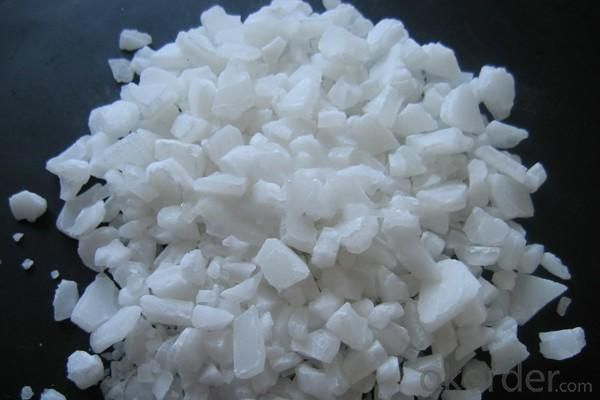
3.Applications:
Water effluent treatment system
It's used for purification of drinking water and wastewater treatment by settling of impurities by
means of precipitation and flocculation.
Paper Industry
It helps in sizing of paper at neutral and alkaline pH, thus improving paper quality (reducing spots
and holes and improving sheet formation and strength) and sizing efficiency.
Textile Industry
It is used for color fixing in Naphthol based dyes for cotton fabric.
Other Uses
Leather tanning, lubricating compositions, fire retardants; decolorizing agent in petroleum, deodorizer; food additive; firming agent; dyeing mordant; foaming agent in firefighting foams; fireproofing cloth; catalyst; pH control; waterproofing concrete; aluminum compounds, zeolites etc.
4. Package:
Packaging Detail: PP/PE 50kg/bag;25kg/bag;Jumbo bag or according to customers' requirements.
20-25MT will be loaded in per 20'FCL container.
5. Attention and Storage:
The product is liable to absorb moisture and clot due to long-term exposure, so shady, cool and ventilated environment is needed.
- Q: why is palladium/platinum a good catalyst?
- Sparky 22 is wrong. Metals like palladium and platinum and nickel do absorb hydrogen. For example many times when doing a catalytic hydrogenation with Raney-Nickel you do not need to add H2 because enough H2 is already absorbed on the metal.
- Q: The concept of catalyst in high school chemistry
- The "chemical properties" and "quality" did not change before and after the reaction, indicating that the chemical properties and quality of the catalyst before and after the chemical reaction must remain unchanged, but the physical properties may change. Therefore, it can not be said that the nature of the catalyst itself did not change before and after the reaction.
- Q: Junior high school chemistry - chemical reaction before and after the quality and chemical properties of the material must be the catalyst?
- It is not always possible that the equivalent reaction, i.e. one or more of the reactants, is the same as the relative atomic mass of one or more of the products and the coefficients in the chemical equation are the same
- Q: Chemical catalyst in several ways
- Two, can speed up and slow down
- Q: Comparison of biocatalysts with chemical catalysts!
- (1) The chemical reaction catalyzed by the biological enzyme is generally carried out under relatively mild conditions. (2) The enzyme has the highest activity at the optimum temperature and pH, and the temperature of the biocatalyst is more moderate. And PH high or low, the enzyme activity will be significantly reduced.In general, the animal in the enzyme the optimal temperature between 35 ~ 40 ℃; plant enzyme in the optimal temperature between 40 ~ 50 ℃; animal body Of the enzyme most of the most suitable pH between 6.8.0, but there are exceptions, such as the optimal pH of pepsin 1.5; plant enzymes in the most suitable pH between 4.6.5. (3) acid, Or the temperature is too high, the enzyme structure will be destroyed, so that the enzyme permanently inactivated .0 ℃ or so, the enzyme activity is very low, but the spatial structure of the enzyme is stable, at the appropriate temperature of the enzyme activity can be increased The
- Q: Brief introduction of enzyme as biocatalyst and general chemical catalyst and its personality
- enzyme inactivation (4) enzyme activity can be timely and effective regulation (5) the role of the enzyme conditions are more moderate (6) most of the enzyme (1) the catalytic efficiency is very high (2) Of the catalytic activity is often associated with coenzymes, auxiliary or metal ions, and some enzyme activity also need RNA as a cofactor Caixing, such as telomerase
- Q: Palladium is the main catalyst in chemistry?
- Palladium in the chemical mainly to do the catalyst; palladium and ruthenium, iridium, silver, gold, copper and other alloy, can improve the palladium resistivity, hardness and strength, used in the manufacture of precision resistors, jewelry and so on. While the most common and most commercially available palladium jewelery is palladium.
- Q: Nitrogen and hydrogen in the role of high temperature and pressure catalyst to generate ammonia chemical equation
- N2 + 3H2 = catalyst, high temperature and high pressure = 2NH3
- Q: Does all chemical reactions have a catalyst?
- Not some reaction without catalyst
- Q: How does the catalyst generally add to the organic chemical reaction?
- In the case of heterogeneous catalysis, the specific surface of the catalyst, in addition to the activity of the catalyst, is an important factor in determining the reaction rate, which means that the specific surface for catalysis is large and the reaction is as fast as the whole. So the overall principle in understanding the activity of the premise of the catalyst, would like to quickly add a little more.
Send your message to us
Aluminum Sulphate Flocculant Water treatment
- Loading Port:
- Qingdao
- Payment Terms:
- TT OR LC
- Min Order Qty:
- 25 m.t.
- Supply Capability:
- 12000 m.t./month
OKorder Service Pledge
OKorder Financial Service
Similar products
Hot products
Hot Searches
Related keywords
